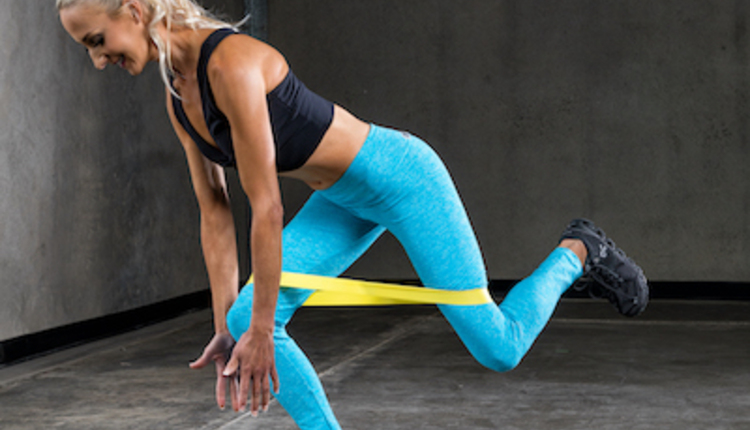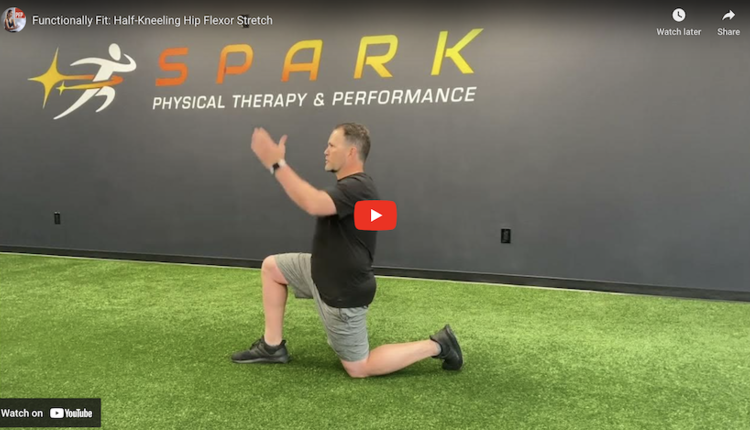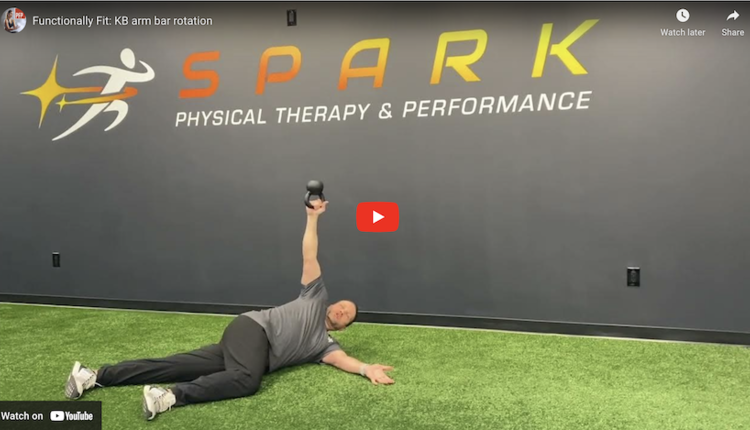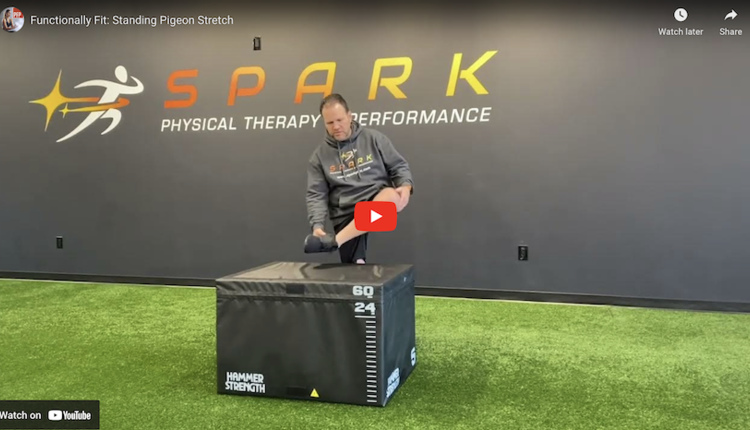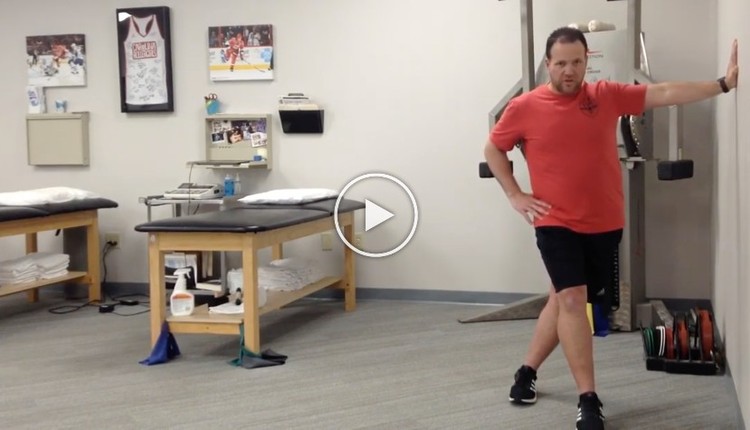Poor landing mechanics are often cited as a predictor of ACL injury risk in the literature. Timothy Hewett has done lots of research on this in terms of measuring excessive valgus with drop vertical jump landings off a box. One of the ways I like to teach landing mechanics is to have clients step off a box and land on one leg in a soft bent knee position.
It is important to teach and cue clients how to avoid stiff, quad and trunk dominant landing patterns prior to initiating higher level jumping and cutting in rehab or training. This exercise facilitates a slow deliberate approach to teaching optimal landing mechanics using a hip strategy while minimizing frontal plane collapse.

Execution: Begin standing on a box or step between 4 and 6 inches off the floor. Stand completely on the right leg. Next, step off the box leading with the left leg and land softly on the left leg. The ankle, knee and hip should all flex as the body falls into a single leg squat position.
The client should be instructed to maintain a neutral alignment with the knee pointing over the second toe while avoiding excessive forward trunk flexion and avoiding lateral trunk flexion. There should be deliberate pause for 1-2 seconds in the landing position to allow for correction of improper knee or trunk alignment. Repeat this 10 times on the left and then repeat the sequence on the right side. Perform 1-2 sets.
Progression: The height of the box may be gradually increased based on the client’s form and ability.
Regression: Begin without any risers beneath the box to minimize the vertical displacement.
Application: This exercise is an effective injury prevention tool to reduce excessive knee valgus and poor trunk control with landing. It can be used for rehab, for corrective exercise and as a precursor to single leg plyometric drills with the primary goal to create an optimal neuromuscular landing strategy and reduce harmful loads on the knee joint.
Keep in mind this is a tedious exercise that requires verbal, tactile and visual cues to ensure the client learns how to perform the activity correctly. It is also okay to allow clients to self-correct using their own motor errors as they will naturally adjust and learn from their loss of balance to find their stability. With that said, do not allow faulty patterns to continue if they begin to recur.


